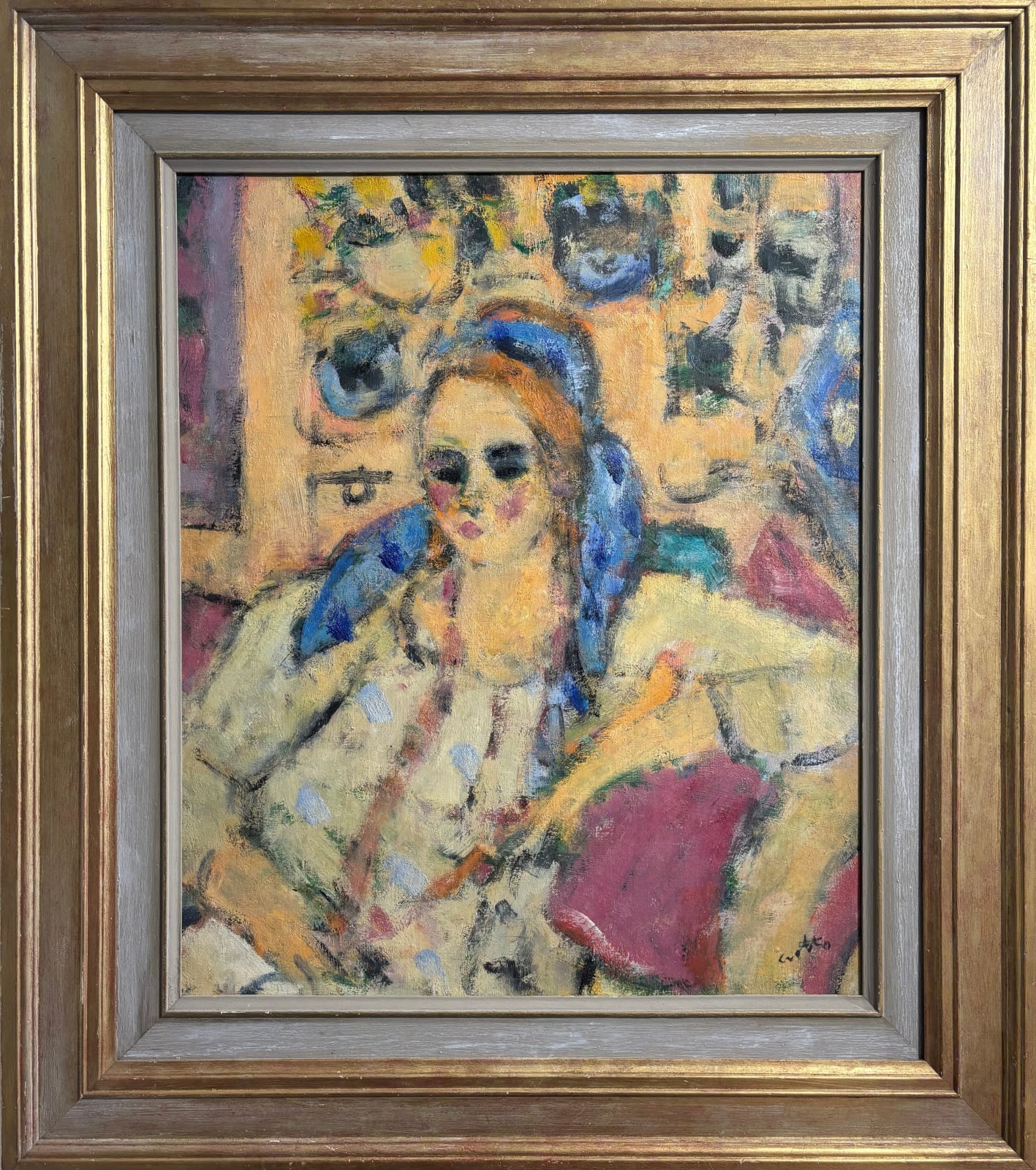Paul Crotto
Title: Biba
Painted with Paul Crotto’s signature balance of structure and sensuality, Biba captures the artist’s lyrical approach to the human figure. The sitter—poised yet introspective—appears within a softly abstracted interior rendered in loose, confident brushwork. The composition radiates warmth and vitality, with colour harmonies of rose, ochre, and azure evoking the elegance and spontaneity characteristic of Crotto’s Paris period.
The title Biba may allude to the celebrated London fashion house of the 1960s and ’70s, whose spirit of modern femininity and bohemian glamour resonated with Crotto’s own painterly ethos. Here, the figure embodies both contemporary sophistication and timeless grace.
Having studied under Fernand Léger in post-war Paris and exhibited widely across Europe and the United States, Crotto fused classical discipline with a modern, expressive vocabulary. Biba stands as an intimate and refined example of his mature style — where the human form becomes a vehicle for emotion, rhythm, and colour.
Paul Crotto
Paul Crotto’s artistic journey began in extraordinary circumstances. Drafted into the U.S. Navy in 1942, he served as a Communication and Coding Officer during the Second World War, following special training at Harvard University and postings in India and Chungking, China. It was during his time in China that he first began to paint — a pursuit that would soon define his life.
After returning to New York, Crotto studied at the Art Students League, graduating in 1949. Like many post-war American artists, he travelled to Paris to deepen his artistic education, studying at the Atelier of Fernand Léger, one of the great masters of Cubism. Léger’s academy, then the leading post-war centre for art education in Paris, attracted a remarkable generation of students including Le Corbusier, Sam Francis, and Nicolas de Staël.
In 1950, Crotto moved to Florence, where the art and architecture of the Italian Renaissance left a lasting impression on his sensibility. He attended the Instituti d’Artisti, learning engraving, bronze casting, and advanced painting techniques. Two years later, he returned to Paris and purchased an atelier above the Léger Academy, sharing the space with the young actor Bernard Fresson, who would later become one of France’s most renowned film stars.
Crotto’s early years in Paris were defined by both discipline and experimentation. He worked on engravings at Atelier Lacourière in Montmartre, taught art at the American School, and exhibited widely. His breakthrough came in 1961 when he was discovered by the celebrated gallerist Jeanne Castel, leading to a series of successful solo and group exhibitions across Paris, Europe, and the United States.
In 1963, Paul Crotto was awarded the Prix International de Villeneuve-sur-Lot, further cementing his place among the generation of post-war painters who bridged American modernism and European abstraction. His work, distinguished by lyrical structure and technical mastery, reflects a lifetime devoted to the language of form, colour, and expression.
Join our mailing list
* denotes required fields
We will process the personal data you have supplied to communicate with you in accordance with our Privacy Policy. You can unsubscribe or change your preferences at any time by clicking the link in our emails.


